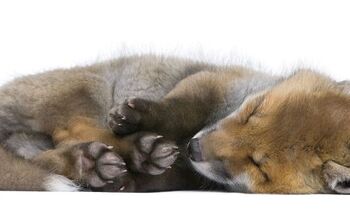Transport To Freedom: Going Behind The Scenes Of Dog Transport

Kevin Roberts has a personal connection with dog transport and being a part of the group of volunteers that make this system work. Now, he talks to the people who make it work behind the scenes – the ones who organize the complex process to ensure it goes off without a hitch.
Last week I told the story of Elvis, the adorable little dog who was saved by a rescue network of drivers. They sprung him from the shelter, and collectively drove over 1,000 miles to save him, along a van load of dogs from euthanasia.
I spoke with Sally Hull, director of Hull’s Haven Border Collie Rescue, and Josie Moen of Australian Cattle Dog Rescue Minnesota (from one end of the transport to the other), to learn more about what dog rescue groups call “transport.” They were very helpful explaining what it was, why it was needed and the different roles involved.
What is a Transport and How Does it Work?
A transport is like a relay race. A group of people volunteer to drive, and sometimes even fly, a dog from a shelter to a rescue group or adoptive home. Some transports run coast to coast across the United States, others go across the border from the United States to Canada, while others go only a few hours from one town to another. Private pilots and West Jet employees also volunteer to help with transports, offering space to dogs on flights, saving dogs by moving them long distances in a short amount of time.
The number of volunteers needed to run a successful transport depends on the distance. Most drivers take about an hour- to two-hour shift. They then meet up with the next driver on the leg, giving the dogs a chance to get out of their kennels and have a pee break. The dogs are loaded onto the next vehicle, with the driver for that particular leg of the journey. This continues on, until the dogs are delivered to their final destination, foster or adoptive home.
Why do Rescues Need Transports?
Sally Hull, director of Hull’s Haven Border Collie Rescue, explains, “Without these transports we could not rescue dogs that are in extremely bad places.”
Further, rescues are non-profit, and all their funds are spent on the dogs. Thankful for transports, Josie Moen says that, “Having generous people donate their time and gas money to help dogs get to rescue is invaluable in helping rescue funds go further.” Rescuing a dog is an expensive undertaking, getting them proper vaccinations, health certificates, seeing the vet and spaying and neutering. After all of that is taken care of, there’s often little left in the budget for transportation.
The Role of the Coordinator
None of this would be possible without the transport coordinator. While most of the drivers live close to their route, the transport coordinator can live anywhere.
It’s the coordinators job to plan the route and the distance for each leg of the trip. Times must be calculated and a schedule made, so the dogs can be transferred from one vehicle to the next in a timely manner.
The coordinator also works with the rescue to ensure that the dog will be traveling with all the proper paperwork. He or she also passes on important information such as the size of the dogs, so that the right sized kennel can be used. If the dog is on a longer journey, overnight stays must be arranged.
It is the job of the transport coordinator to ensure that everyone is in the right place at the right time, and keep communication open should something unexpected come up.
How Can You Get Involved?
If you are interested in helping with transports, there are Yahoo groups that are specifically made for people to volunteer to drive legs of transports. There are also Facebook groups that are set up to connect volunteers with transports. (Tip: Try searching dog transport, along with your city to find an organization near you). People can offer to drive, if you can’t drive, you can donate gas cards, cross post to others or even lend your vehicle. If you want to drive, have your references ready, and give a description of the size of your vehicle. You will also need a cellphone in to keep in contact with the transport coordinator.
Sally Hull gives her final thoughts on transport volunteers: “They are amazing. Without them, we could not save the ones we do.”
To volunteer or make a donation for a transport, please check out Hull’s Haven Border Collie Rescue and Australian Cattle Dog Rescue Minnesota.

Kevin Roberts lives for adventure. Together with his pack of rescue dogs and his husband, he spends as much time outdoors as possible. Kevin lives by the motto: "Get outside and play with your dogs!
More by Kevin Roberts
























